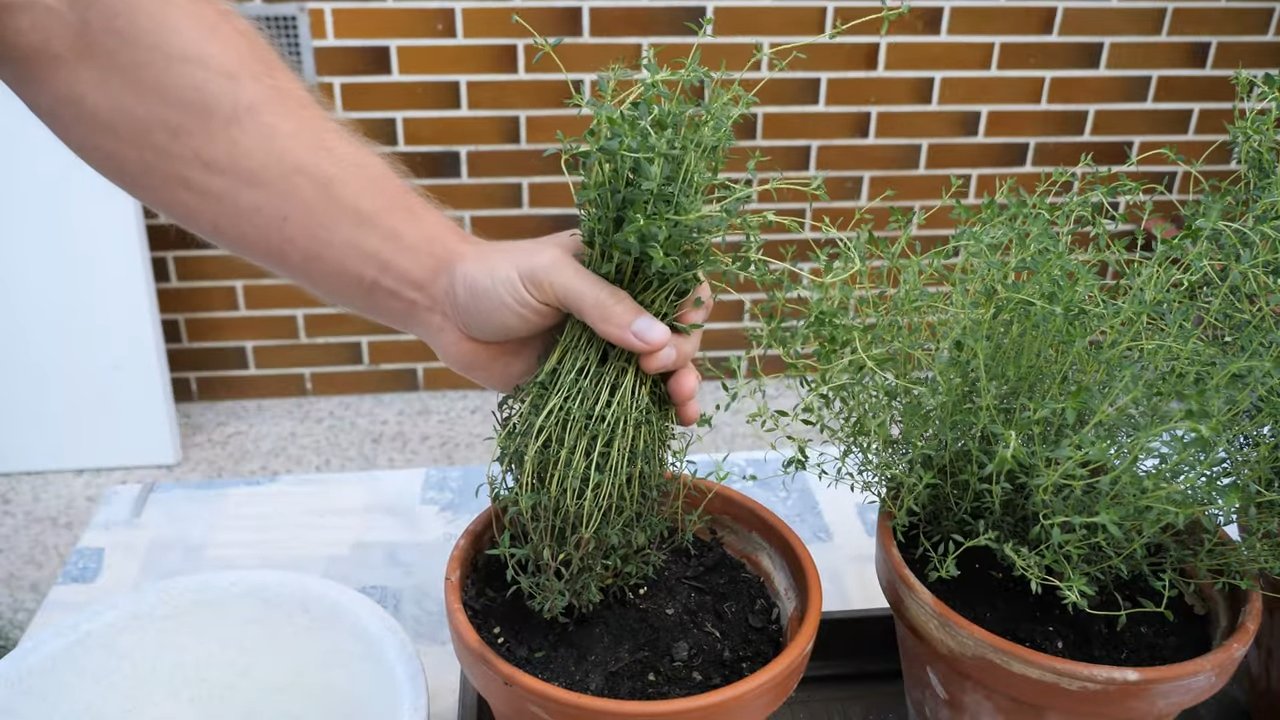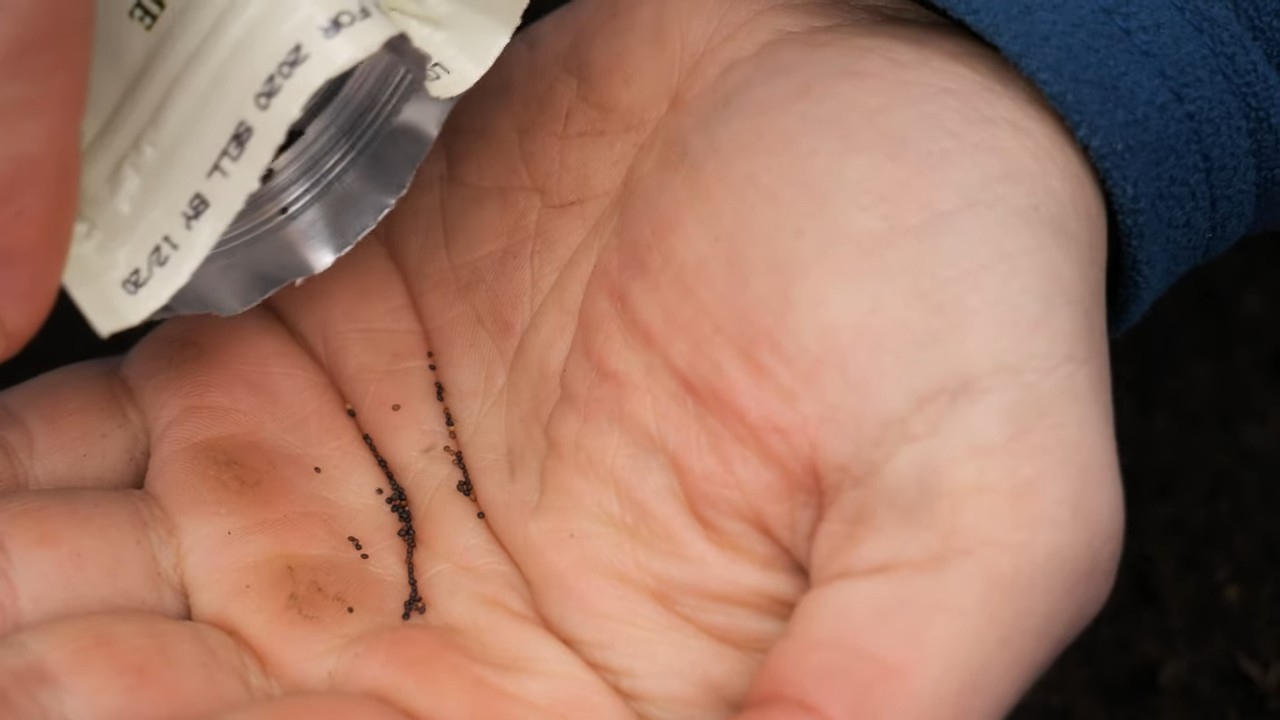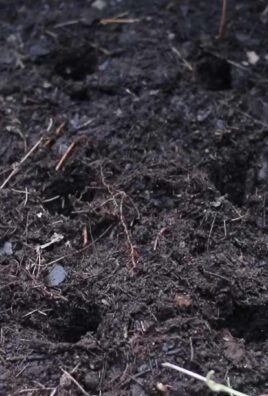Grow Thyme at Home and unlock a world of culinary possibilities right outside your door! Imagine stepping into your garden, the sun warming your face, and snipping fresh, fragrant thyme to elevate your next meal. Sounds idyllic, right? Well, it’s easier than you think! For centuries, thyme has been cherished not only for its distinct flavor but also for its medicinal properties. Ancient Egyptians used it in embalming, while the Greeks believed it symbolized courage. Today, this versatile herb is a staple in kitchens worldwide.
But why should you bother growing your own thyme? Let’s face it, those little plastic containers from the grocery store can be expensive and the thyme often lacks that vibrant, fresh taste. Plus, growing your own is incredibly rewarding! This DIY guide will provide you with simple, effective tricks and hacks to successfully grow thyme at home, even if you have limited space or a less-than-green thumb. I’m going to share my secrets to ensure you have a thriving thyme patch, ready to enhance your dishes and bring a touch of the Mediterranean to your garden. Get ready to embark on a fragrant and flavorful adventure!

Growing Thyme at Home: Your Comprehensive DIY Guide
Hello fellow gardeners! I’m so excited to show you today how you can grow your own thyme at home. Thyme is not only an incredibly versatile herb in the kitchen but also a beautiful, low-maintenance plant that enhances any garden or even a windowsill. Whether you are a beginner or an experienced gardener, this guide will walk you through the process step by step. Let’s get started!
What You Need: The Right Equipment for Your Thyme Garden
Before we start planting, it’s important that we have everything we need. Here is a list of the things you’ll need:
- Thyme seeds or thyme seedlings: You can find seeds online, at garden centers, or even in some supermarkets. Seedlings are a bit more expensive, but they give you a head start since you don’t have to wait for the seeds to germinate.
- Starter pots or a seed tray: These are ideal for starting the seeds. They come in various sizes and can be made of plastic or biodegradable material.
- High-quality seed-starting mix: Regular garden soil is often too heavy for the delicate seedlings. Seed-starting mix is lighter and better aerated.
- Pots or a planter box: If you want to grow thyme in pots, you’ll need pots with good drainage. A planter box is a good option if you want to grow several plants together.
- Garden soil: For transplanting the seedlings into larger pots or the planter box.
- Watering can or spray bottle: For watering the seeds and seedlings.
- Plant labels: To keep track of your plants.
- Optional: A small trowel or spoon for filling the pots.
The Preparation: The Key to Success
Proper preparation is crucial for the success of your thyme garden. Here are the steps you should take:
- Choose a location: Thyme loves the sun! Choose a location that receives at least 6 hours of sunlight per day. If you are growing thyme indoors, place it on a sunny windowsill.
- Prepare the starter pots: Fill the starter pots with seed-starting mix. Press the soil down lightly, but not too firmly.
- Sow the seeds: Sprinkle the thyme seeds evenly over the surface of the soil. Since the seeds are very small, you don’t need to bury them deep. A light layer of soil on top is sufficient.
- Water: Gently moisten the soil with a spray bottle. The soil should be damp, but not wet.
- Cover (optional): You can cover the starter pots with clear plastic wrap or a lid to increase humidity. Be sure to ventilate the wrap regularly to prevent mold.
- Warmth: Thyme seeds germinate best at a temperature of about 20-25°C (68-77°F). Place the starter pots in a warm location.
Growing from Seed: Patience is a Virtue
Growing thyme from seed requires some patience. Here are the steps you should follow during the germination phase:
- Regular watering: Keep the soil moist, but not wet. Check the soil daily and water as needed.
- Ventilation: If you have covered the starter pots, ventilate them regularly to prevent mold.
- Observation: Watch the seeds closely. Germination can take 10-20 days, depending on the variety and conditions.
- Remove the cover: As soon as the first seedlings appear, remove the cover.
- Thinning out: If too many seedlings are growing in one pot, thin them out by removing the weakest ones. This gives the remaining plants more space to grow.
Repotting: A New Home for Your Thyme
Once the seedlings are strong enough, it’s time to transplant them into larger pots or a planter box. Here are the steps you should follow:
- Prepare the pots or planter box: Fill the pots or planter box with garden soil. Make sure the pots have good drainage.
- Remove the seedlings: Carefully remove the seedlings from the starter pots. Try to damage the roots as little as possible.
- Plant the seedlings: Place the seedlings in the prepared pots or planter box. Make sure the roots are well-covered with soil.
- Water: Water the seedlings thoroughly after planting.
- Location: Place the pots or planter box in a sunny location.
Care: So Your Thyme Thrives
Caring for thyme is relatively simple. Here are the most important points to consider:
- Watering: Thyme is drought-resistant and does not tolerate waterlogging. Only water when the soil is dry.
- Fertilizing: Thyme does not need much fertilizer. A light application of an organic fertilizer in the spring is sufficient.
- Pruning: Prune thyme regularly to encourage growth and make the plant bushier. Cut back the shoots after flowering.
- Overwintering: Thyme is hardy, but in cold regions, it can be beneficial to cover the plants with brushwood or leaves. If you are growing thyme in pots, you can move the pots to a sheltered location.
- Diseases and Pests: Thyme is relatively resistant to diseases and pests. Occasionally, aphids may appear. These can be controlled with a jet of water or a biological insecticide.
The Harvest: Fresh Thyme for Your Kitchen
You can harvest thyme all year round. Here are the steps you should follow:
- Choose the right time: It’s best to harvest thyme in the morning when the essential oils are most concentrated.
- Cut the shoots: Cut the shoots with scissors or a knife. Do not cut too deep into the old wood, as this can impair growth.
- Use: You can use the thyme fresh or dry it to preserve it for longer.
Drying Thyme: How to Preserve the Flavor
Drying thyme is a simple way to preserve it for later use. Here are the steps you should follow:
Storage: Store the dried thyme in an airtight container in a cool, dark place.
Bundle the shoots: Bundle the harvested shoots together with a rubber band or string.
Hang them up: Hang the bundles in a dry, airy, and dark place.
Drying time: The drying time is typically 1-2 weeks. The thyme is dry when the leaves are brittle.

Conclusion
So, there you have it! Growing thyme at home isn’t just a charming idea; it’s a practical, cost-effective, and incredibly rewarding experience. Forget those wilted, overpriced sprigs from the grocery store. Imagine stepping into your kitchen and snipping fresh, fragrant thyme whenever you need it. The difference in flavor between store-bought and homegrown is truly remarkable – a vibrant, earthy intensity that will elevate your culinary creations to a whole new level.
This DIY trick is a must-try for several reasons. First, it’s incredibly easy. Even if you don’t have a green thumb, thyme is a forgiving herb that thrives with minimal effort. Second, it’s sustainable. By growing your own, you’re reducing your reliance on commercially grown herbs, which often travel long distances and contribute to environmental pollution. Third, it’s economical. A single packet of thyme seeds or a small starter plant can provide you with a continuous supply of fresh herbs for months, if not years.
But the benefits extend beyond the practical. There’s a certain satisfaction that comes from nurturing a plant from seed to harvest. Watching your thyme plant flourish is a reminder of the simple beauty of nature and the power of self-sufficiency. Plus, the aroma of fresh thyme is incredibly therapeutic, filling your home with a calming and invigorating scent.
Don’t be afraid to experiment with different varieties of thyme. Lemon thyme adds a citrusy twist to your dishes, while creeping thyme makes a beautiful ground cover. You can also try growing thyme in different containers, from terracotta pots to repurposed jars. Get creative and find what works best for you and your space.
Ready to embark on your thyme-growing adventure? We encourage you to give this DIY trick a try. It’s a simple, rewarding, and delicious way to enhance your cooking and connect with nature. Once you’ve experienced the joy of harvesting your own fresh thyme, you’ll never go back to store-bought again.
We’d love to hear about your experiences! Share your tips, tricks, and photos in the comments below. Let’s create a community of thyme-loving gardeners and inspire others to discover the joys of growing their own herbs. What are you waiting for? Get planting!
Frequently Asked Questions (FAQ)
What is the best time of year to plant thyme?
The best time to plant thyme depends on your climate. In warmer climates, you can plant thyme year-round. However, in cooler climates, it’s best to plant thyme in the spring after the last frost or in the early fall to give it time to establish before winter. Starting thyme indoors from seed 6-8 weeks before the last expected frost is also a great option for colder regions. This gives the seedlings a head start and ensures they are strong enough to transplant outdoors when the weather warms up.
What kind of soil does thyme need?
Thyme thrives in well-draining soil that is slightly alkaline. Avoid heavy clay soils that retain too much moisture, as this can lead to root rot. A mixture of potting soil, sand, and perlite is ideal for container gardening. If planting in the ground, amend the soil with compost and sand to improve drainage. The pH level should ideally be between 6.0 and 7.5. You can test your soil’s pH with a simple soil testing kit available at most garden centers.
How much sunlight does thyme need?
Thyme needs at least six hours of direct sunlight per day to thrive. Choose a sunny location in your garden or place your container on a sunny windowsill. If you live in a particularly hot climate, some afternoon shade can be beneficial to prevent the leaves from scorching. Insufficient sunlight can lead to leggy growth and reduced flavor intensity.
How often should I water thyme?
Thyme is drought-tolerant and prefers to be watered sparingly. Allow the soil to dry out completely between waterings. Overwatering is a common mistake that can lead to root rot. When you do water, water deeply, ensuring that the water reaches the roots. In general, water once every 1-2 weeks, depending on the weather and soil conditions. During hot, dry periods, you may need to water more frequently.
How do I harvest thyme?
You can harvest thyme sprigs as needed throughout the growing season. Use sharp scissors or pruning shears to cut the stems just above a leaf node. This will encourage the plant to branch out and produce more growth. Avoid cutting more than one-third of the plant at a time, as this can stress the plant. The best time to harvest thyme is in the morning, after the dew has dried, as this is when the essential oils are most concentrated.
How do I propagate thyme?
Thyme can be easily propagated from stem cuttings. Take a 4-6 inch cutting from a healthy stem, remove the lower leaves, and dip the cut end in rooting hormone. Plant the cutting in a pot filled with well-draining potting mix and keep it moist until roots develop. This usually takes a few weeks. You can also propagate thyme by dividing established plants in the spring or fall.
What are some common problems with growing thyme?
The most common problems with growing thyme are root rot due to overwatering, fungal diseases due to poor air circulation, and pests such as aphids and spider mites. To prevent root rot, ensure that the soil is well-draining and avoid overwatering. To prevent fungal diseases, provide good air circulation by spacing plants properly and pruning regularly. To control pests, use insecticidal soap or neem oil.
Can I grow thyme indoors?
Yes, you can grow thyme indoors, but it requires bright light and well-draining soil. Place your thyme plant on a sunny windowsill or under a grow light. Water sparingly and ensure that the pot has drainage holes. Indoor thyme may not grow as vigorously as outdoor thyme, but it can still provide you with a steady supply of fresh herbs.
What are some uses for thyme?
Thyme is a versatile herb that can be used in a variety of culinary dishes. It pairs well with meats, poultry, vegetables, and soups. It can also be used to flavor oils, vinegars, and teas. In addition to its culinary uses, thyme has medicinal properties and can be used to treat coughs, colds, and sore throats. It also has antiseptic and antifungal properties.
What varieties of thyme are there?
There are many different varieties of thyme, each with its own unique flavor and aroma. Some popular varieties include common thyme (Thymus vulgaris), lemon thyme (Thymus citriodorus), creeping thyme (Thymus serpyllum), and woolly thyme (Thymus pseudolanuginosus). Experiment with different varieties to find your favorites. Lemon thyme is excellent for adding a citrusy note to dishes, while creeping thyme makes a beautiful ground cover.




Leave a Comment